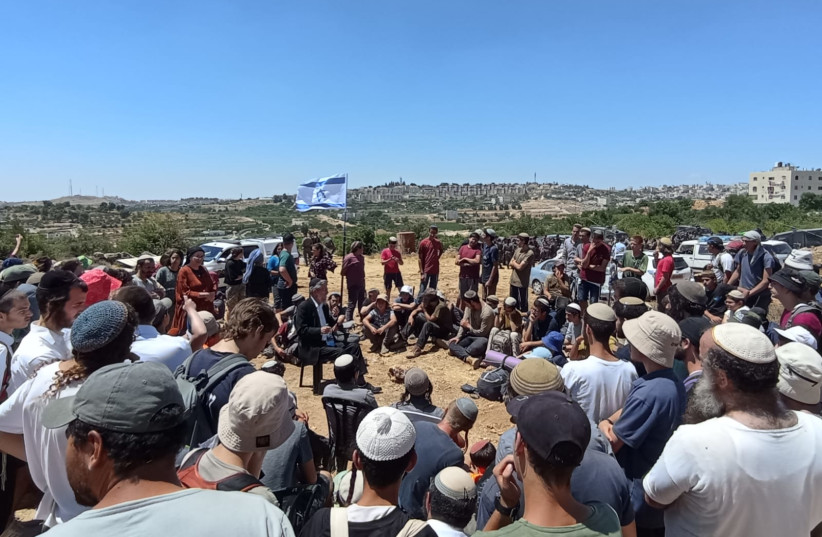From the Judean desert to the hilltops of Samaria, the security cabinet authorized ten outposts as new West Bank settlements, many of which have already existed for over two decades.
At least six of the communities in question were included in a 2005 government report by attorney Talia Sasson, in which she compiled information on what at the time was a collection of some 100 illegal outposts.
Avigil
The Avigil outpost located in the South Hebron Hill close to the Maon settlement was built in October 2001 with NIS 570,000 from the Ministry of Construction and Housing. It is located on land that is partially state land and partially property belonging to Palestinians, according to the Sasson report. According to Peace Now, it was slated to become a settlement in 2020.
Givat Harel and Givat Haroeh
The Binyamin Regional Council dates the creation of both communities in their region to 1998, while according to the Sasson report Givat HaRoeh was built in February 2002 and Givat Harel in May 2001.

Givat Arnon
The community was initially known as Hill 777 located outside the Itamar settlement in Samaria. The Yesha Council dates its inception to 1999 while the Sasson report dates it to January 2001. It too was built on land that belongs partially to the state and partially to Palestinians and was granted NIS 300,000 from the Ministry of Construction and Housing at its inception. According to Peace Now it was slated to become a settlement in 2020.
Sde Boaz
The community was built in June 2002 in the Gush Etzion region near the Neveh Daniel settlement on survey land with NIS 200,000 from the Ministry of Construction and Housing. According to Peace Now, it was slated to become a settlement in 2020.
Ashael
Ashael was built in October 2001 in the South Hebron Hills near the Shima settlement on state land with NIS 150,000 from the Ministry of Construction and Housing. According to Sasson authorization was initially granted for a water tower at the site but that was never followed by the legalization of the community. According to Peace Now, it was slated to become a settlement in 2020.
Beit Hogla
The Yesha Council dates Beit Hogla in the Megilot region by the Dead Sea to 1983, with Sasson marking its inception as a small farm in 1993. It was only in 2016 that it expanded into a community under the name of Roeh Nevo.
Malachei HaShalom
The Yesha Council dates the outpost' to 1998 It is located in the Binyamin Region close to the Kochav HaShahar settlement. Israelis began living there only after the death of Malachi Rosenfeld in a terror attack in June 2015 and the community is named for him, according to the Binyamin Regional Council.
Shaharit
The Yesha Council dates its inception to 2011 in the Samaria region. According to Peace Now steps were already taken to legalize it in 2018.
Mitzpe Yehuda
Mitzpe Yehuda was first built in 2019 as a small farm according to the Yesha Council. It is located near the Kedar settlement in the Gush Etzion region, not far from the Ma’aleh Adumim bloc of settlements.
Sunday’s cabinet approval will allow for the farm to expand into a community, effectively creating a new settlement.
